Introduction
What is the first thing you notice while visiting a majority of websites - whether to browse, shop, or seek customer support? It is usually a friendly chatbot that pops up readily to help you meet your requirements the moment you land on the page.
Yes, chatbots and virtual assistants are everywhere helping businesses streamline their processes and boost customer experiences.
And when it comes to customer support, their role is vital. So, what powers these intelligent tools? Enter LLMs (Large Language Models) - the technology that makes it all possible.
In this guide, we will explore the power of LLM for customer support. You will learn how to make them work for your business, reduce costs, and improve customer satisfaction.
However, before proceeding, let us have a brief on LLMs.
What are LLMs?
LLMs are advanced AI tools trained on massive amounts of text data. They use machine learning to understand patterns, context, and nuances in language.

This allows them to generate human-like responses. Models like ChatGPT or GPT-4 are examples of LLM customer service tools that excel at handling complex queries.
Think of an LLM as a highly intelligent assistant. It doesn’t just memorize answers; it learns how to communicate effectively. Whether it is answering FAQs, troubleshooting issues, or engaging in personalized conversations, an LLM adapts to different scenarios effortlessly.
How Do LLMs Work?
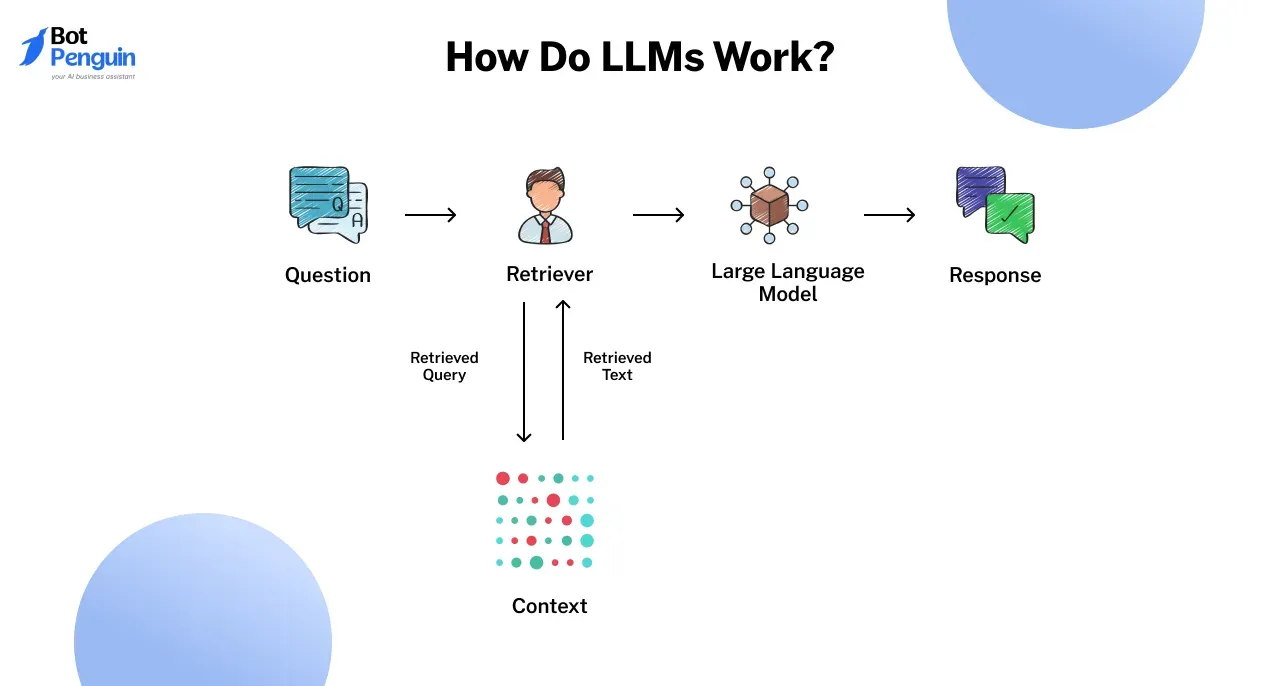
LLMs process input text by breaking it into smaller units called tokens. These tokens are analyzed to understand context and predict the next word or phrase. This predictive capability is what makes LLMs so fluent and responsive.
For example, when a user asks, “How can I reset my password?” the LLM doesn’t just match keywords. It understands the intent and generates a step-by-step guide in plain language.
This makes LLM for customer support solutions far superior when compared to traditional automated systems.
Understanding LLM for Customer Support
LLMs are greatly improving customer service by automating conversations and offering real-time support. This helps businesses to provide satisfying experiences to customers.
Let us look at some of the key features that make LLM for customer support an excellent choice.
Natural Language Understanding (NLU)
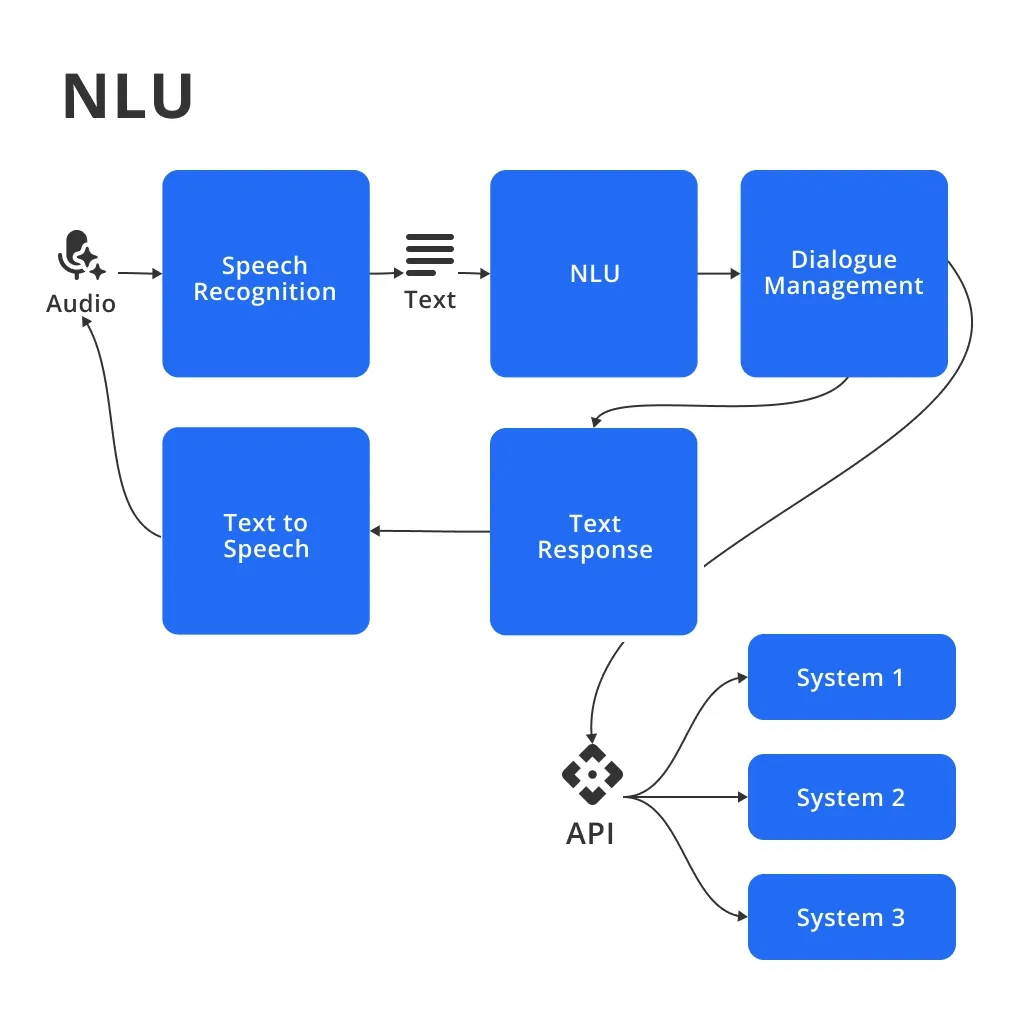
LLMs can understand customer queries accurately, recognize the intent of the query, and perform sentiment analysis.
Hence, when using LLM for customer support, businesses can respond with empathy making customers feel understood.
Personalization
LLMs can analyze past records, and identify market trends. Based on this, they can generate personalized responses to customers that meet their requirements.
Hence, businesses can provide a good user experience which again shows why LLM for customer service is an excellent option.
Real-Time Responses
LLMs can generate responses that mimic humans. Hence, businesses can use LLM for customer support and provide customers with instant responses. This can also improve the efficiency of the process.
Hence, by using LLMs for customer support, businesses can enhance customer satisfaction with personalized and timely responses resulting in improved user experiences.
The Power of LLM for Customer Support
Using LLM for customer support is undoubtedly beneficial for businesses. It impacts the customer experience positively.
The adoption of LLMs is increasing rapidly with businesses recognizing the value of AI-driven customer service solutions. Let us explore more below.
Intent and Issue Identification

When using LLM for customer service, it can accurately identify the context behind a customer's interactions and provide relevant responses accordingly.
Hence, if there are any issues that require a human agent to intervene, it can direct those issues to the appropriate person. This reduces the wait time of customers and provides them with a rich experience.
Summarization and Documentation
LLM for customer support accurately captures the key points of customer interactions and automatically generates summaries of the same.
This frees the agents from performing administrative tasks and allows them to focus on other important strategies.
Feedback Collection
LLM for customer service generates feedback and provides scores and insights by analyzing and interpreting the customer's interactions.
These insights can be used to discover trends, and pain points and improvise strategies accordingly.
Customer Effort Reduction
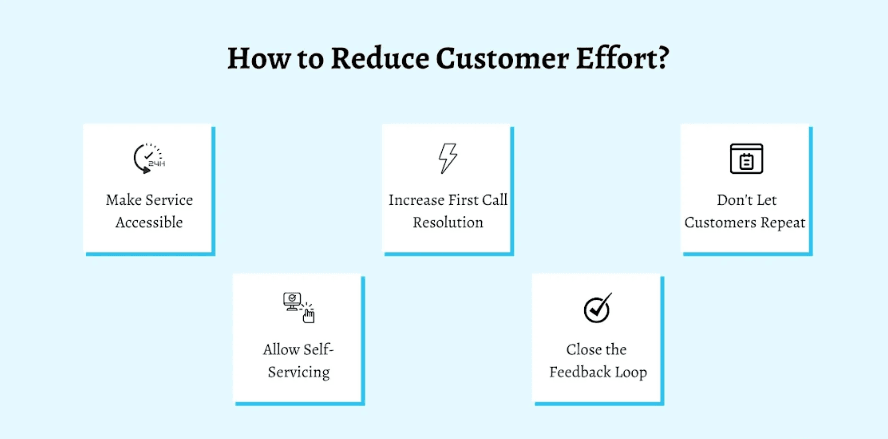
LLM for customer support can accurately recognize the pain points in customer interactions and offer effective strategies.
This helps in reducing the effort customers must undergo while resolving their issues, thereby optimizing processes and boosting customer experience.
LLMs undoubtedly play a vital role in customer support by streamlining processes, providing valuable insights, and addressing pain points, thereby enabling a more efficient and satisfying customer experience.
Key Examples of LLMs in Action
ChatGPT and GPT-4 are two prominent examples of LLMs that businesses use to transform customer service.
These models are trained on diverse datasets, enabling them to handle a wide range of queries.
By implementing LLM for customer service strategies, companies can streamline operations, improve response quality, and build lasting customer relationships.
Applications of LLM for Customer Support
The versatility of an LLM for customer support lies in its ability to handle repetitive tasks, enhance personalization, and streamline workflows.
Businesses can integrate these advanced tools into various support functions to deliver faster, smarter, and more efficient customer experiences. Let us explore a few of their applications below.
Automating FAQs
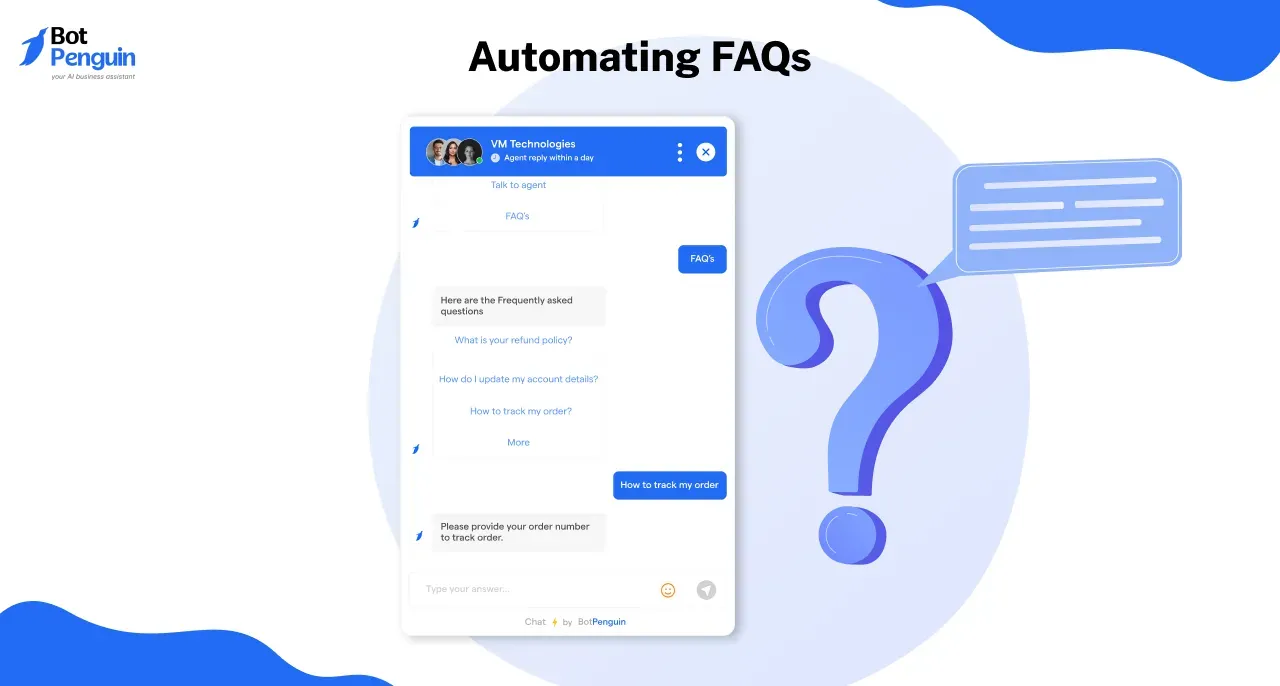
One of the simplest yet most impactful applications of an LLM customer support system is automating frequently asked questions.
These systems can instantly address common queries like “What is your refund policy?” or “How do I update my account details?” They understand this intent and generate precise, natural responses.
Also, this automation reduces the need for human intervention in repetitive tasks. It not only saves time but also ensures customers receive accurate and consistent answers at any time, improving overall satisfaction.
Chatbots
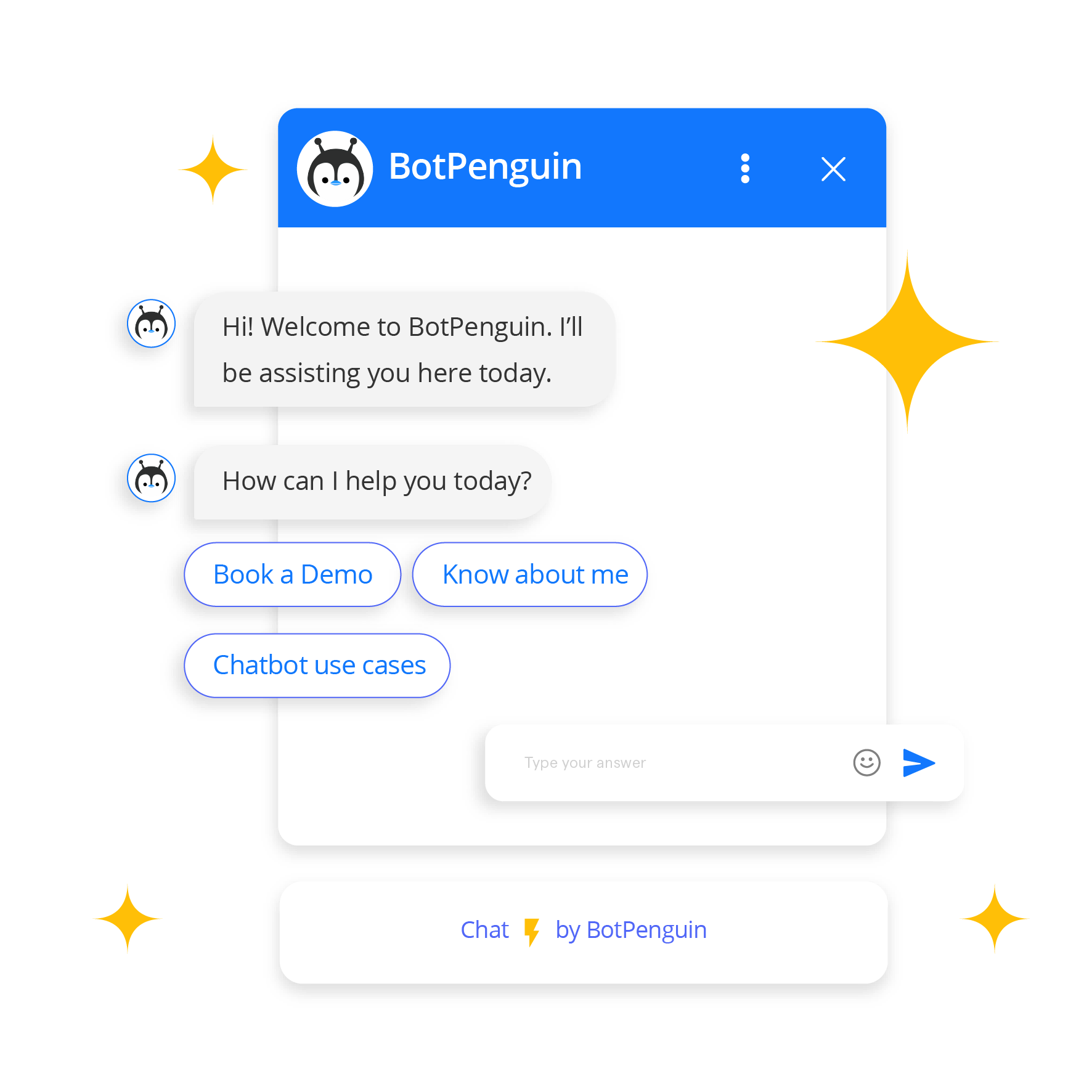
LLMs have transformed chatbots from basic, rule-based systems into dynamic conversational tools. Powered by LLM customer service solutions, these chatbots can understand context, intent, and even subtle nuances in customer language.
For instance, an LLM for customer service can guide customers through troubleshooting steps for a technical issue or provide product recommendations based on their preferences.
These chatbots don’t just answer; they engage, creating a smooth and interactive experience that feels personal. Platforms like BotPenguin enhance this transformation further by providing no-code chatbot solutions powered by LLMs.
With BotPenguin, businesses can create AI-powered chatbots that not only understand customer queries, but also provide seamless guidance, product recommendations, and support across multiple channels.
Ticket Categorization
Managing support tickets effectively is critical for maintaining efficiency. An LLM for customer support can automatically analyze incoming tickets, classify them based on the issue, and prioritize them according to urgency.
For example, a ticket about a system outage can be flagged as urgent, while a general query about a product feature might be categorized as low priority.
This ensures that teams focus on what matters most, reducing response times for high-impact issues and improving operational efficiency.
Language Support
In a globalized world, multilingual support is a must. An LLM for customer service seamlessly handles queries in multiple languages, eliminating the need for separate language-specific teams.
Whether the customer speaks English, Spanish, or Mandarin, the LLM processes the query and responds accurately in the desired language.
This makes it easier for businesses to cater to diverse audiences and maintain consistency in support quality across regions.
The vast applications of LLMs in customer support help businesses greatly by automating repetitive tasks, boosting personalized responses, and increasing efficiency.
Benefits of Using LLM for Customer Support
Integrating an LLM for customer support transforms how businesses interact with their customers.
These AI-powered tools offer significant advantages, from faster response times to personalized interactions. Let us explore the key benefits of using LLM for customer service.
Speed and Efficiency
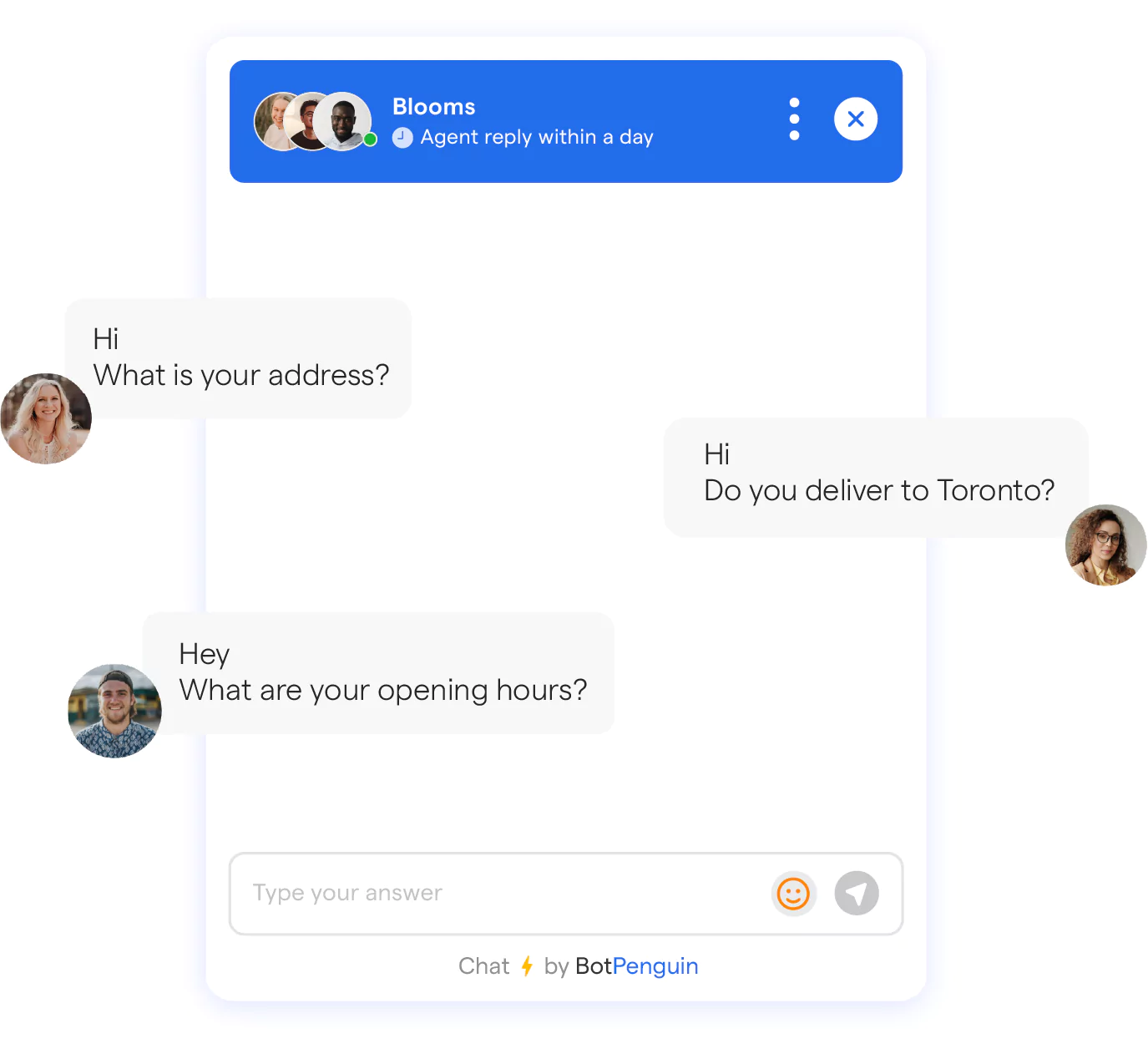
An LLM customer support system ensures rapid responses to customer inquiries. Unlike human agents, LLMs process and deliver answers in seconds, improving resolution times.
For example, answering FAQs or troubleshooting common issues becomes nearly instantaneous. This makes LLM customer service tools invaluable for handling time-sensitive queries.
Cost-Effectiveness
By adopting an LLM for customer service, businesses can reduce the need for large customer support teams. LLMs handle high volumes of requests with minimal supervision.
This reduces operational costs while maintaining or even enhancing service quality.
24/7 Availability
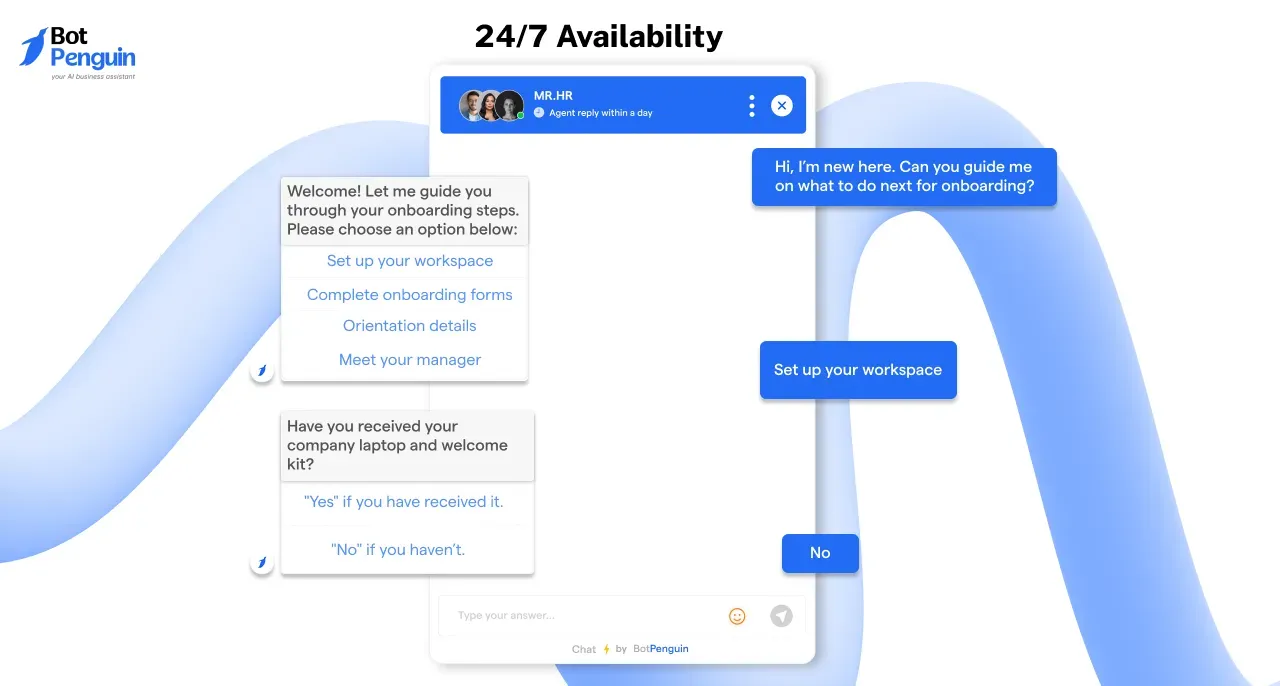
One of the standout features of an LLM for customer support is its ability to provide round-the-clock assistance. Unlike traditional support models, LLMs never take breaks.
This ensures customers always have access to help, boosting satisfaction and loyalty.
Suggested Reading:
How to Develop Your Own Custom LLM for Business Applications
Scalability
Handling high volumes of queries is effortless with an LLM for customer service. They ensure consistent response quality, even under pressure.
Businesses using an LLM for customer support can confidently grow without worrying about overwhelming their support systems.
Using LLMs for customer support enables businesses to reduce costs, improve efficiency, and provide round-the-clock assistance without compromising quality and performance.
Challenges of Using LLM for Customer Support
While an LLM for customer support offers numerous advantages, it has its own challenges to overcome.
Understanding these limitations is essential for effective implementation. Let us explore the common issues businesses might face when deploying LLM for customer service.
Accuracy
An LLM customer support system may sometimes provide incorrect or irrelevant answers.
This happens because LLMs rely on probabilities to generate responses, which can lead to inaccuracies, especially for complex or uncommon queries.
For example, a customer might ask about a niche product detail, and the LLM could produce an answer that’s plausible but wrong. This can frustrate users and harm trust. Businesses must monitor and refine their systems to ensure consistent accuracy.
Training Data Dependence
LLMs are only as good as the data they are trained on. An LLM for customer service cannot answer questions or provide insights beyond its training scope.
For example, if an LLM isn’t trained in specific industry jargon or unique company policies, its responses may fall short. Regular updates with relevant data are crucial for maintaining the reliability of customer support LLM tools.
Bias in Responses
Bias is an inherent risk when using an LLM for customer support. Training data often contains biases, which can inadvertently reflect in the LLM’s responses.
For example, an LLM might prioritize certain demographics or provide answers influenced by biased data. Such responses can alienate customers and impact brand perception. It is essential to audit and test models regularly to minimize this risk.
Customer Frustration
Although LLMs are powerful, their responses can sometimes feel robotic or impersonal. Customers may notice when an LLM customer service tool lacks empathy or nuance, leading to dissatisfaction.
For example, a customer venting frustration over a delayed order may not feel validated if the LLM provides a generic response. Combining LLMs with human oversight can help balance efficiency with a human touch.
Implementation Costs
Deploying an LLM for customer support involves upfront costs. From acquiring the technology to integrating it with existing systems, expenses can be a barrier for smaller businesses.
Additionally, maintaining and updating LLMs for customer service systems requires resources. While these costs often pay off in the long term, they can be daunting for companies with tight budgets.
While businesses can use LLMs for customer support, they should also be aware of challenges like accuracy issues, training data limitations, customer frustration, etc.
All these should be addressed carefully to ensure smooth and effective implementation.
Steps to Implement LLMs for Customer Support
Deploying an LLM for customer support can significantly improve how businesses interact with their customers.
However, implementation requires careful planning to maximize its benefits. Here is a step-by-step guide to integrating LLMs into your customer support strategy.
Step 1
Define Your Goals
Start by identifying what you want to achieve with an LLM customer support solution. Are you looking to reduce response times, cut costs, or handle high query volumes? Clear goals will guide your implementation process and help you measure success.
For example, if your primary goal is faster resolution, focus on automating FAQs. If it is personalization, prioritize training the LLM with customer interaction data.
Step 2
Choose the Right LLM
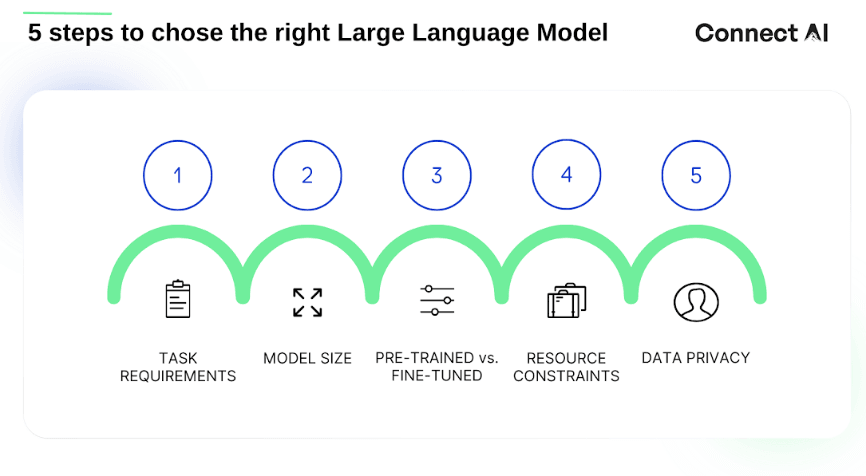
Selecting the right model is crucial for success. Compare available options, such as OpenAI’s GPT models or other providers, to find the best fit for your needs.
Consider factors like cost, scalability, and specific features. A well-suited LLM for customer service should integrate smoothly with your existing systems and handle your query types effectively. Many businesses prefer using LLM customer service tools due to their flexibility and accuracy.
Step 3
Integrate with Your Systems
Once you have chosen an LLM for customer support, the next step is integration. Connect the model with your CRM, ticketing systems, or chat platforms to ensure seamless operation.
For example, if you use a live chat interface, configure the LLM to handle common queries directly while escalating complex issues to human agents. This hybrid approach helps you utilize the strengths of both LLMs and your support team.
Step 4
Train and Customize
Out-of-the-box LLMs are powerful, but they require customization to align with your business needs. Fine-tune the model with your specific data, such as customer queries, FAQs, and company policies.
A well-trained customer support LLM improves accuracy and delivers personalized responses. For example, a retail business might train the LLM to handle product return policies, while a SaaS company might focus on troubleshooting common issues.
Step 5
Monitor and Optimize
Implementation doesn’t end with deployment. Regular monitoring is essential to ensure the LLM for customer service performs as intended.
Track metrics like resolution time, accuracy, and customer satisfaction. Use this data to make adjustments, whether it is to retrain the model with new data or fine-tune its behavior. Continuous optimization ensures your customer service LLM evolves alongside your business needs.
Businesses should follow the steps involved in implementing LLMs for customer support appropriately to ensure continuous improvement which ultimately results in providing remarkable customer experiences.
Key Features to Look for in an LLM for Customer Support
Choosing the right LLM for customer support can make or break your support strategy.
To ensure maximum efficiency and customer satisfaction, look for solutions that align with your business needs. Here are the key features to prioritize when selecting an LLM.
Ease of Integration
The ideal LLM for customer service should integrate seamlessly with your existing tools, such as CRM systems, ticketing platforms, or chat interfaces.
For example, if your team uses tools like Zendesk or HubSpot, the LLM must connect easily without disrupting workflows. Smooth integration ensures that the customer support LLM enhances productivity rather than complicating processes.
Security and Privacy
Security is non-negotiable, especially when dealing with sensitive customer data. Look for an LLM customer service tool that prioritizes data encryption, compliance with regulations like GDPR, and secure storage.
For example, a retail business collecting payment information must ensure the LLM doesn’t inadvertently expose or misuse this data. A reliable customer service llm will safeguard your customers’ trust and meet industry standards for privacy.
Suggested Reading:
What is the Cost of Training LLM Models? Key Factors Explained
Multilingual Support
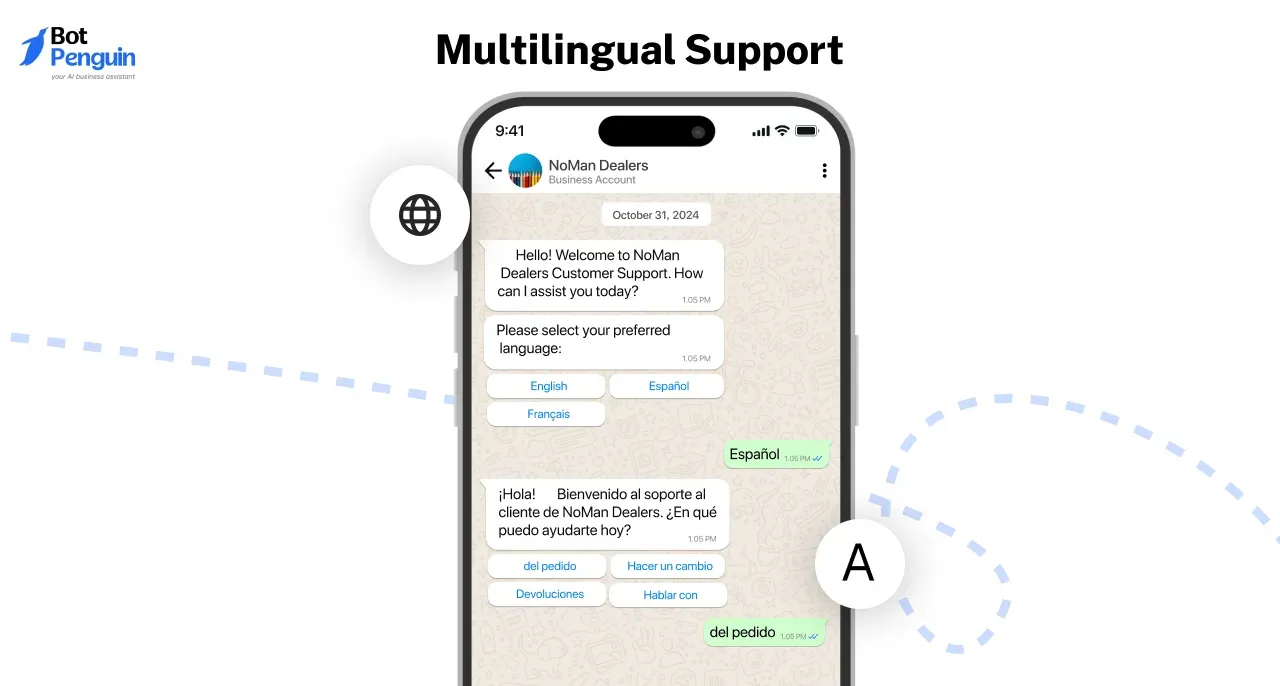
In a global market, handling queries in multiple languages is essential. A good LLM for customer service should excel in multilingual support, enabling businesses to cater to diverse audiences effortlessly.
For example, an e-commerce platform serving customers in Europe might need support in French, German, and Spanish. An LLM customer service solution with strong multilingual capabilities eliminates the need for separate language-specific teams, improving efficiency.
Analytics and Reporting
Analytics is a vital feature for tracking the performance of your LLM for customer support. The solution should provide insights into response times, accuracy, and customer satisfaction.
For example, if customers frequently rephrase questions, it could indicate the LLM needs fine-tuning. Detailed reports allow businesses to identify gaps and optimize their customer support llm for better outcomes.
Based on these key features, businesses can choose an LLM for customer support that not only satisfies their operational requirements but also offers rich customer experiences, thereby driving growth.
Case Studies: Success of Customer Support LLM
Implementing an LLM for customer support has led to significant improvements across various industries. Here are some examples demonstrating the impact of LLMs:
Shopify: Enhancing Merchant Support
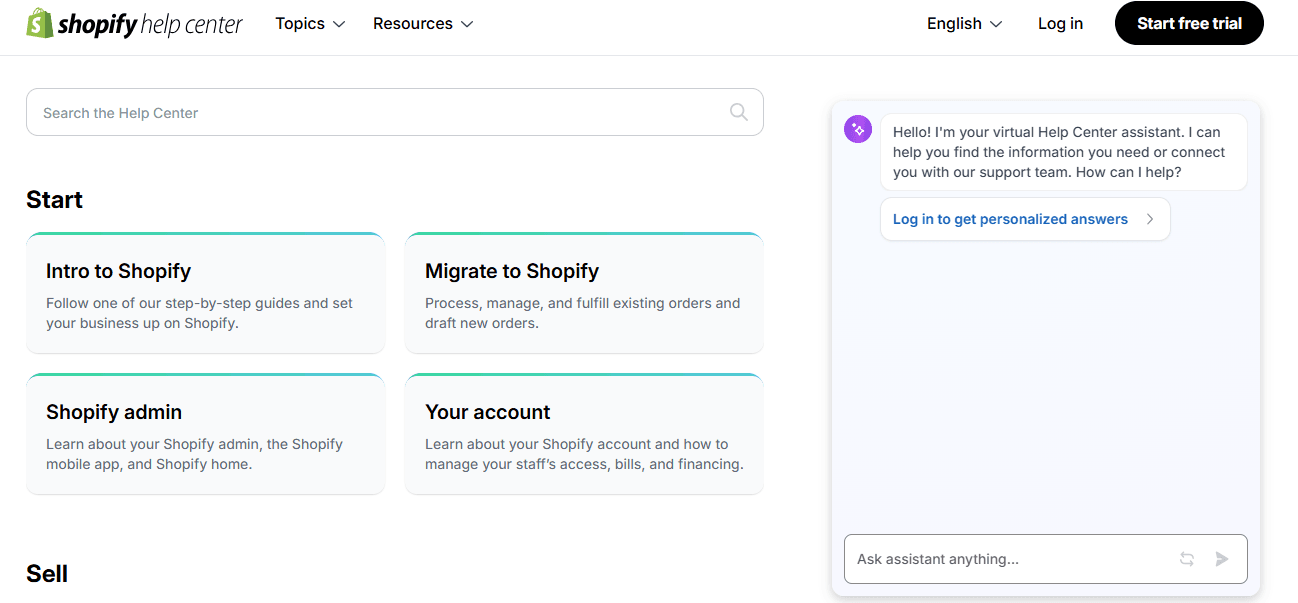
- Challenge: Shopify needed a scalable solution to handle a growing number of merchant queries efficiently.
- Solution: Shopify integrated an AI-powered assistant using GPT-based LLMs to assist merchants with technical troubleshooting, business advice, and platform navigation.
- Results: Merchant queries were resolved without human intervention; Faster response times improved merchant satisfaction; Reduced workload on human support agents.
KLM Royal Dutch Airlines: Automating FAQs
- Challenge: KLM faced an overwhelming volume of customer inquiries related to booking changes, cancellations, and travel restrictions.
- Solution: They implemented an AI chatbot powered by a large language model to handle FAQs and transactional queries.
- Results: Automated customer inquiries; Available 24/7 across multiple channels and languages; Higher efficiency and consistent customer support.
Hugging Face: Scaling Community Support
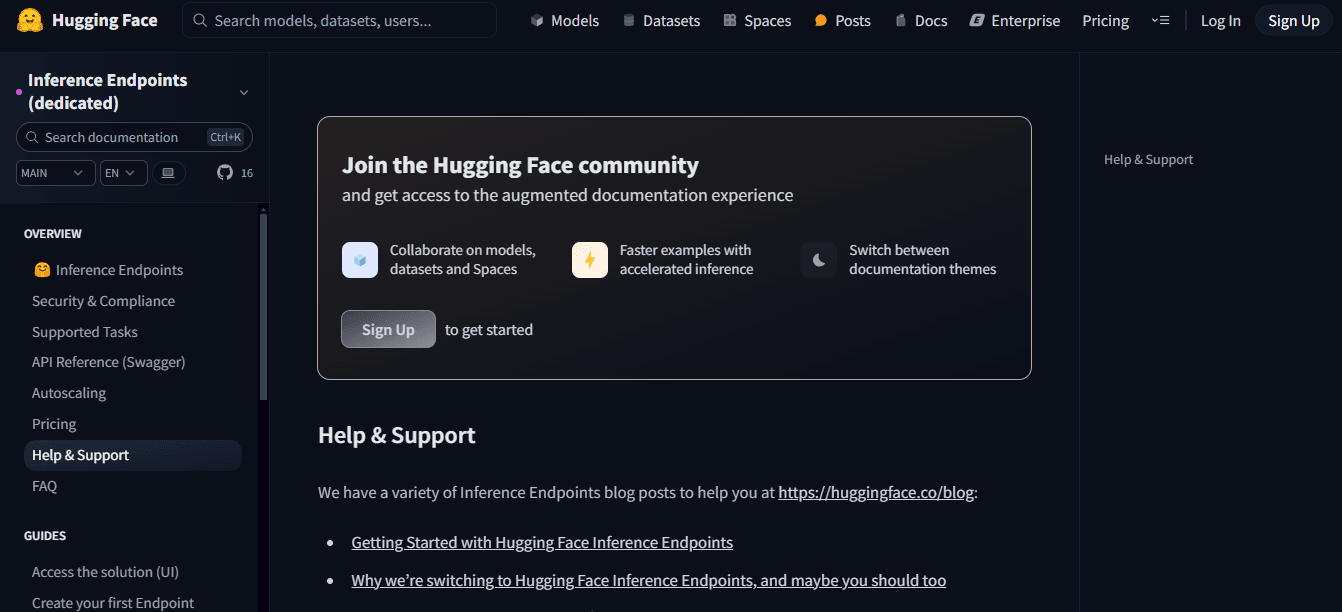
- Challenge: Hugging Face needed to support its growing community of developers and users with technical issues and platform guidance.
- Solution: They deployed an LLM-trained chatbot to handle onboarding and technical queries about machine learning models.
- Results: Handled inquiries autonomously; Improved onboarding time for new users; Provided consistent, accurate answers to complex questions.
Swiggy: Streamlining Customer Support in Food Delivery
- Challenge: Swiggy needed to manage large volumes of support tickets for order issues and refunds.
- Solution: They integrated an LLM-driven system to analyze customer complaints and prioritize urgent cases while automating common queries.
- Results: Reduction in average ticket resolution time; Improved satisfaction scores; Streamlined workflows for support agents.
OpenAI’s Use Case in EdTech
- Challenge: An online learning platform wanted to improve student engagement by answering their course-related questions efficiently.
- Solution: They used GPT-based LLMs to power a tutor assistant chatbot that provided personalized learning assistance.
- Results: Increase in student engagement; Faster response times for academic queries; Positive feedback on the chatbot’s ability to mimic human tutors.
These case studies emphasize how businesses across various industries are using LLMs for customer support to achieve increased efficiency, and improved satisfaction.
Common Mistakes to Avoid When Using LLM Customer Support
While an LLM for customer support can greatly enhance your operations, improper implementation can lead to issues.
Avoiding these common mistakes will help you make the most of your investment and maintain customer satisfaction.
Over-relying on Automation
An LLM for customer service is powerful but not perfect. Businesses often over-rely on automation, leading to poor handling of complex or emotional customer queries.
For example, if a customer complaint requires empathy, a robotic response can worsen the situation. Ensure your customer support LLM is complemented by human oversight for escalations.
Neglecting to Train the LLM
Using a generic LLM customer service model without proper training on your specific data can result in undesired outputs. Without customization, the LLM might provide irrelevant or inaccurate responses.
For example, a retail business not training the LLM on its return policies will frustrate customers with vague answers. Always fine-tune the model with up-to-date company data.
Failing to Measure Customer Satisfaction
Implementing an LLM for customer support doesn’t end with deployment. Businesses often neglect to track metrics like customer satisfaction (CSAT) or Net Promoter Scores (NPS), missing opportunities for improvement.
Regular evaluations help identify weak points in your customer service LLM and ensure it evolves with customer needs.
Using LLMs Where Human Support is More Appropriate
Not every customer interaction should be automated. For highly sensitive or complex issues, human support is irreplaceable.
For example, resolving billing disputes or handling irate customers requires emotional intelligence that an LLM for customer support can’t provide. Use LLMs for repetitive tasks and let humans manage critical ones.
By following the steps above, businesses can avoid common mistakes and ensure the successful implementation of LLMs for customer support.
Tips for Getting the Best Out of LLMs
To maximize the potential of an LLM for customer support, you need a clear strategy.
Proper management and integration ensure these tools deliver the best results. Here are practical tips to get the most out of your LLM.
Regularly Update the Model with New Data
An LLM customer service solution should evolve with your business. Regularly train it with updated data, including new policies, products, and FAQs.
This ensures your customer support LLM remains relevant and accurate.
Combine LLMs with Human Agents for Complex Queries
LLMs handle repetitive tasks efficiently, but complex or emotional queries require a human touch.
Use a hybrid approach where the LLM for customer support manages simple tasks while human agents handle escalations.
Use Clear Guidelines and Limits for LLM Responses
Set boundaries for what the LLM can and cannot handle. Define clear parameters to avoid irrelevant or incorrect responses.
This improves the reliability of your LLM for customer service and enhances customer trust.
Provide an Option for Customers to Escalate to a Human
Always offer customers a way to reach a human agent if needed. An LLM customer support system should act as the first line of assistance, not the only one. This ensures a seamless experience for all users.
By following the approaches above, businesses can ensure that customers receive both accurate and personalized support for their queries or issues.
Conclusion
Implementing an LLM for customer support can transform how businesses interact with their customers, improving efficiency, personalization, and satisfaction.
However, success lies in thoughtful implementation and balancing automation with human oversight.
For businesses seeking an accessible way to use AI, BotPenguin offers a no-code AI chatbot maker platform. With BotPenguin, you can create intelligent chatbots that automate queries, enhance customer experiences, and scale support effortlessly.
It’s an ideal solution for businesses looking to integrate advanced AI tools without extensive technical expertise.
Take the first step toward smarter customer support with BotPenguin—efficiency and simplicity combined.
Frequently Asked Questions (FAQs)
Can LLM for customer support completely replace human agents?
No, LLMs handle repetitive and straightforward queries well, but human agents are essential for managing complex, sensitive, or highly personalized customer interactions.
So, they cannot entirely take over the customer support operations.
How does LLM for customer service enhance user experience?
LLM for customer service enhances user experience by offering meaningful, quick, and accurate responses. This reduces the wait time of customers, thereby providing a rich and satisfied experience.
How do businesses train customer support LLM?
Businesses train LLMs with specific data, including FAQs, customer interaction history, and company policies, ensuring accurate, relevant, and tailored responses.
Are LLMs suitable for multilingual customer support?
Yes, LLMs excel at handling multilingual queries, making them ideal for global businesses seeking consistent, efficient customer support across diverse regions.
How can businesses monitor the performance of LLM for customer support?
Performance can be tracked using metrics like response accuracy, customer satisfaction scores (CSAT), resolution times, and feedback analysis to ensure continuous improvement.

